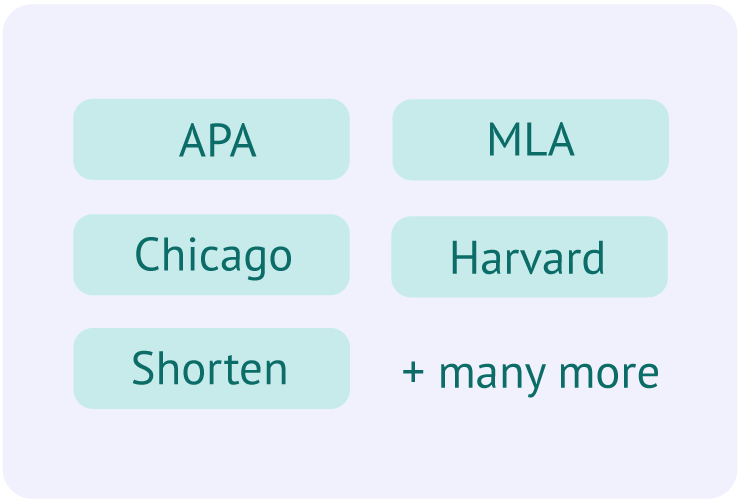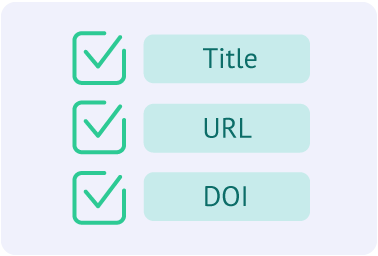Free ACM Citation Generator by AHelp
Reveal the Effectiveness of Our User-Friendly ASM Citation Machine

Quick Citing and Referencing
Quit spending hours hours organizing your reference list. AHelp’s ACM Citation Generator will ensure you have all the necessary citations and sources ready in minutes.
Cite Online Resources
Whether it's an electronic book, a YouTube video, or a website, our ACM Citation Generator will structure the according to the Association for Computing Machinery guidelines.
Automatic Source Compilation
Don’t torture yourself by manually listing all the details of your sources. Just enter DOI, URL, or a name in the search bar and let Free ACM Citation Generator by AHelp do all the workEnhancing Technical Documentation With AHelp ACM Citation Generator

What is the ACM Citation Formatting
The Association for Computing Machinery is a leading organization for everything related to information technology. Therefore, all academic papers written on related topics and waiting to be published in journals should adhere to the ACM formatting standards.
The Basics of ACM Citation Machine Formatting Style
ACM sets specific rules for its publications which need to be carefully followed. First and foremost, such unique formatting helps in linking your citations to the references and keeping track of citation counts.
When preparing your paper, use your BibTeX (.bib) file with the correct .bst file (ACM Reference Format). This will make sure your references are formatted correctly with minimal need for editing. Note that if your paper is accepted but doesn’t follow these formatting rules, you might have to reformat it.
How to Use ACM Citation Generator
If you got lost in all the formatting requirements when writing your paper, don’t worry. AHelp’s Free ACM Citation Generator will help you organize your in-text citations and references with ease.
In case you have all the information about a specific source but just need to structure everything in the right order, you can use our manual option. If you only have a name, URL (Uniform Resource Locator) link, or DOI (Digital Object Identifier) for the source, use the automatic version of the generator. Its AI-driven algorithms will scour the necessary databases and find all the details needed to be mentioned in the ACM reference.
References in ACM Format Example
In the ACM citation style, as well as in other formatting variants, the References section is organized at the end of your paper. Use a clear header, like “References,” to indicate the start of this section.
All the references are listed alphabetically by the last name of the first (lead) author. This helps in the easy location and identification of each source cited in the text. When organizing sources on the list, you should generally include the following details:
- Author/Editor Names: Present all author names in the format of LASTNAME, INITIALS. For instance, if Andy Bing and Alicia K. Giorgino wrote a paper, list them as BING, A. and GIORGINO, A.K.
- Year of Publication: Include the year the source was published.
- Title of the Work: Provide the title of the article, book, or conference proceedings.
- Additional Details: Add bibliographic information like the name of the publisher, city of publication, and page numbers. This information is crucial for readers to locate the original source and assess its credibility.
Ensure that each reference is complete enough so that someone reading your paper can easily find and evaluate the source.
How to Format ACM In-Text Citation
In ACM in-text citation style, you need to follow a specific format. Here’s how to do it:
- Numbering: When you mention a source in your paper, use a number in square brackets, like this: [1]. This number corresponds to a reference in your References section at the end of the paper.
- Multiple Citations: If you’re citing several sources at once, list them together inside square brackets and separate them with commas, like this: [1, 2].
- Citing with Author Names: When you include the author’s name in your sentence, don’t put the name in brackets. Only the publication year gets brackets. For example: As Freud et al. [1930] have noted…
Remember, ACM prefers full names rather than initials or abbreviations.
